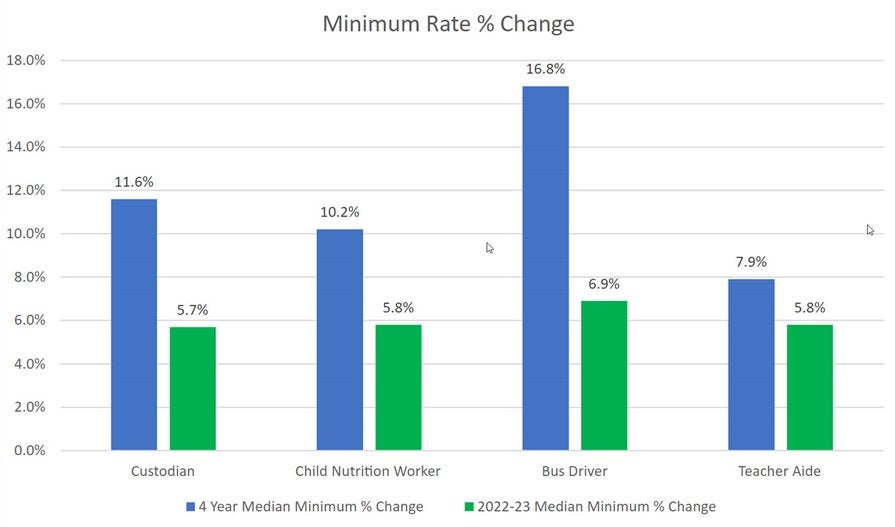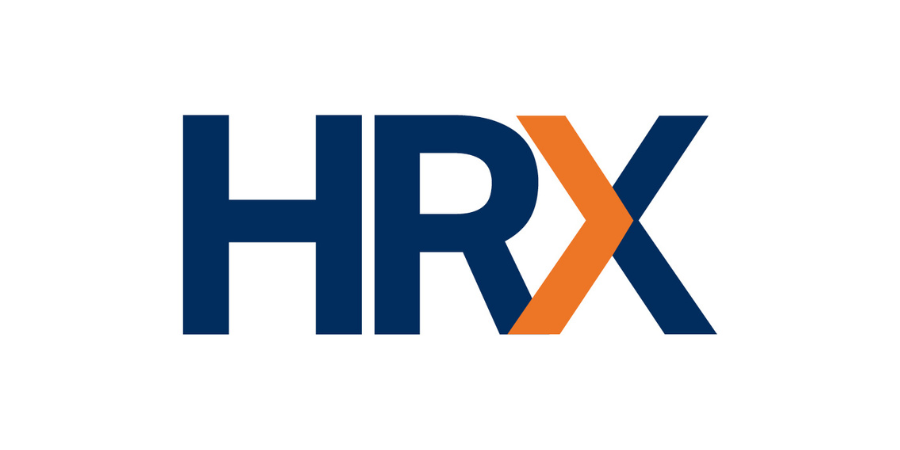The Rapidly Rising Pay Floor for Lower Paid Staff
The public education sector continues to struggle to fill multi-incumbent, high-turnover jobs like custodian, food service worker, bus driver, and instructional aide.
After climbing to 14.7 percent in April 2020, the U.S. unemployment rate has dropped considerably, averaging 3.6 percent since February 2022. Several factors contribute to this drop in work availability.
Current shortages may be caused in part by workers who are seeking a living wage. An MIT and CNBC analysis done earlier this year found that even a $15 per hour minimum wage would not be a living wage for many families. Other contributing factors include:
- Hiring rates outpacing quit rates
- Demand for flexibility in work location and schedule
- A continuing lack of access to daycare
- Higher retirement rates post-pandemic
- Workers deciding to work for themselves
The Minimum Wage
The current federal minimum wage of $7.25 has not been raised since 2009, making the 2010s the only decade to not see a minimum wage increase. While 30 states have enacted a higher state minimum wage, ranging from $8.75 in West Virginia to $14.49 in Washington, Texas is one of 20 maintaining the federal minimum. Despite this stagnation, Texas employers are having to pay much more to recruit and retain qualified employees.
Rising Private Sector Starting Rates
While private sector minimum rates for entry level jobs were rising before the pandemic, the speed of the increases appears to be accelerating. Well-known employers like Walmart, Amazon, Costco, Starbucks, Buc-ee’s, Bank of America, and Chick-fil A are all now offering starting rates in Texas ranging from $15 to $21 an hour.
In addition to rapidly increasing starting wages, many of these same private sector employers are also offering robust benefit packages historically not seen in entry level work. Some companies like Buc-ee’s and Starbucks now offer:
- Medical, dental, and vision insurance
- 401(k) with up to 6 percent company match
- Paid time off (PTO)
- Stock and savings plans
- Parental leave
- Higher education benefits
- Commuter benefits
Effect on Public Education Entry-Level Jobs
Starting rates for common entry-level jobs in the public education sector increased rapidly over the last year. According to the latest TASB HR Services salary survey, starting rates for custodian, child nutrition worker, bus driver, and teacher aide increased by an average of 6.1 percent over the last year. For comparison, this one-year change was more than half of the previous four-year change of 11.6 percent for the same jobs.

Pay Floor Chart
What to Do
Employers who are not currently experiencing issues recruiting and retaining qualified talent for these jobs may not need to make immediate changes to their pay structures or recruiting strategies. But, for those who are, the first thing to check is how the employer’s starting rates compare with its local market peers. TASB HRDataSource™ is a great resource for this. If a decision is reached to substantially increase starting rates, care must be taken to ensure that the minimums, midpoints, and maximums of neighboring paygrades are not compressed by the changes. A good rule to prevent such compression is to ensure a minimum of a 5 or 6 percent difference between the midpoints of any two sequential pay grades.
To avoid a common hiccup when substantially raising pay grade minimums, employers should also ensure that the employees within the affected pay grades are subsequently spread out based on experience. This alignment of pay with experience will ward off this other common form of pay compression, whereby employees across all experience levels become clustered near the bottom of their pay range.
Planning Ahead
Employers who find themselves having to increase their starting rates, as well as alleviate subsequent pay compression, likely will face a significantly higher than normal budget impact. This, paired with the fiscal cliff many districts will face from the expiration of ESSER funds in 2023-2024, will pose some challenges. Some key considerations for making these changes could include:
- Planning a multi-year approach with incremental increases
- Proactively allocating funds
- Prioritizing pay increases for specific groups of employees
- Reviewing current staffing levels
Final Thoughts
Starting rates for entry level jobs are rapidly rising despite a long overdue increase to the federal minimum wage. Employers that self-assess and plan accordingly should continue to be able to recruit and retain the most qualified talent, even when faced with limited budgets.

Keith McLemore
Keith McLemore joined HR Services in 2015 and assists districts with compensation planning and development. He has 17 years of experience traveling the state supporting public education employees.
McLemore received a bachelor’s degree from Southwestern University and a master’s degree from Texas Tech University, both with a focus on research analysis and design. He is a SHRM-CP.
HR Services

Subscribe to HRX
Stay up to date with all the latest HR news and trends by joining the HRX mailing list!





